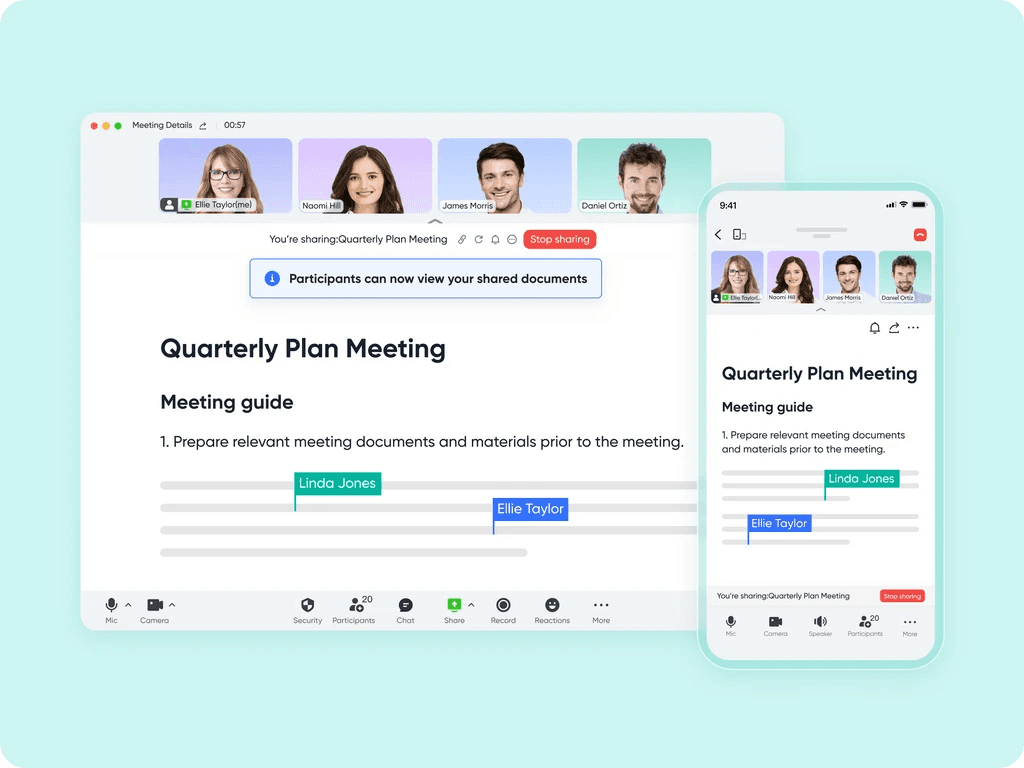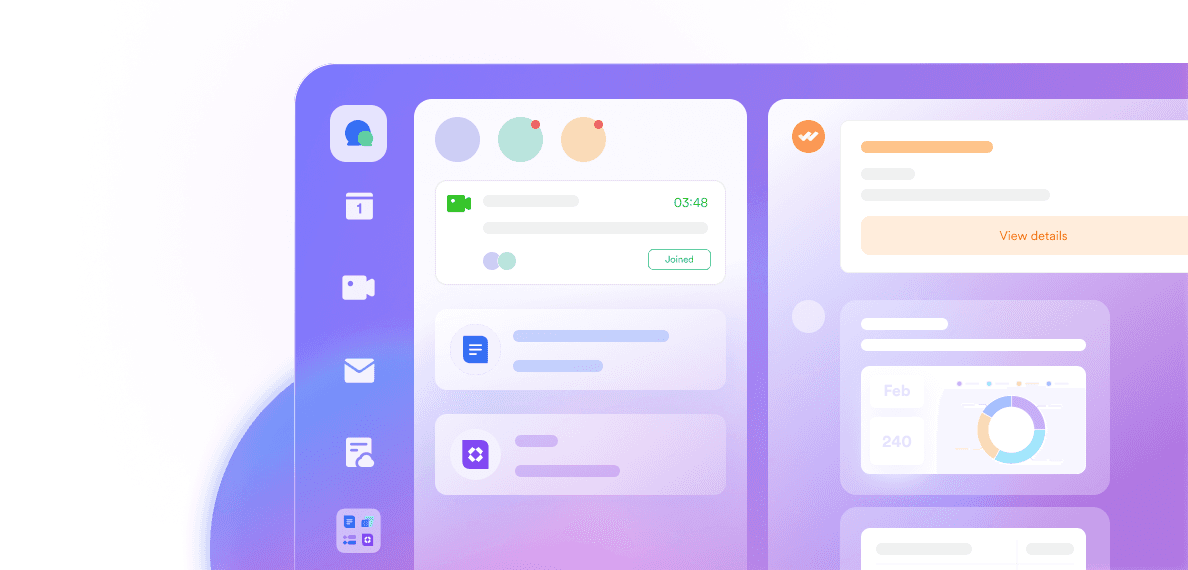Have you ever left a meeting more confused than when you walked in? With the amount of meetings you have everyday - whether it is townhall meeting, staff meeting, or departmental meeting, how many of them are actually productive and impactful? As an executive, ineffective meetings can sap your time and energy. But what if there was a way to transform lackluster meetings into highly productive power sessions? Enter the level 10 meeting. The level 10 meeting is a game changer for executives and leadership teams. In just 100 minutes, you can solve complex problems, gain alignment, and make key strategic decisions.
What Is a Level 10 Meeting?
A Level 10 meeting is a weekly 90-minute executive meeting designed to maximize productivity and accountability. Created by EOS Worldwide, a Level 10 meeting follows strict guidelines to keep teams focused on important issues and aligned on key objectives.
The Core Principles
Level 10 meetings operate on a few core principles:
Same day, same time: The meeting occurs at the same day and time each week to provide consistency.
90 minutes long: The meeting lasts exactly 90 minutes to keep discussions concise while still accomplishing goals.
Strict agenda: The agenda is the same each week to establish a rhythm and cadence. The first part reviews data and flags issues. The bulk of the time is spent solving priority problems.
The Benefits
Level 10 meetings provide significant benefits to companies that implement them properly:
Accountability: By meeting regularly and sticking to an agenda, teams stay accountable to each other and ensure important issues are addressed.
Problem-solving: Most of the meeting is dedicated to identifying and resolving the company’s biggest challenges and obstacles. Solutions are collaboratively developed.
Alignment: Reviewing key metrics and data helps ensure all executives are on the same page about the state of the business and priorities.
Continuous improvement: Meetings are graded on a scale of 1 to 10 to motivate the team to constantly optimize the process and discussions. The goal is a 10, meaning the agenda was followed and the meeting was highly productive.
To have a successful Level 10 meeting, it's critical that all participants commit to the core principles. Starting and ending on time, sticking to the established agenda, and providing honest feedback are key. While the agenda provides structure, discussions should remain dynamic to address new and evolving priorities. With practice, Level 10 meetings can become a powerful tool to drive business growth and success.
Why Level 10 Meetings Matter

Level 10 meetings are essential for keeping your team focused and solving problems efficiently. Here’s why Level 10 meetings matter:
They keep teams focused on key goals. By reviewing key metrics and data at the start of each meeting, your team stays on the same page about priorities and progress. This helps avoid distraction and ensures everyone is working towards the same targets.
They prioritize solving the biggest issues. The bulk of a Level 10 meeting is spent identifying and resolving the most pressing problems your company faces. Because you work from the top of the list down, the highest-impact issues get solved first.
They provide structure for other meetings. The strict 90-minute agenda used in Level 10 meetings can be applied to other meetings to make them more productive. Meetings start and end on time, have a clear purpose, and result in actionable next steps.
They facilitate collaboration. Level 10 meetings bring your leadership team together to share updates, discuss options, and find solutions. Different perspectives and areas of expertise are shared, leading to more well-rounded decisions.
They keep a record of discussions and next steps. The standard agenda doubles as a meeting summary, capturing key discussion points, action items, and next steps to refer to later. This helps avoid dropping balls or repeating work.
In summary, Level 10 meetings are a highly effective way to solve problems, meet goals, and keep teams aligned — when run well and given a perfect 10 score. The key is following the proven formula: same time, same day, same agenda. Keep your Level 10 meetings tight, focused, and consistently productive, and they’ll become the most valuable 90 minutes of your week.
How to Run a Level 10 Meeting
Let’s say you want to run an effective Level 10 meeting. Where do you start? First, stick to the standard agenda format. Following the same structure each week is key.

Prepare in advance
Come prepared to each meeting. Review any issues or to-dos from the previous week and gather any data or updates to share. Ask your team to do the same. The more prepared everyone is, the more productive your meeting will be.
Start (and end) on time
Begin your meeting promptly at the scheduled start time. End it on time 90 minutes later. This discipline and consistency is what makes Level 10 meetings so valuable. Don’t let meetings drag on or start late.
Focus on solutions
The bulk of your time should be spent discussing issues and finding solutions. Once something has been flagged as an issue, put it on the agenda and work to resolve it. Get input from everyone and determine next steps. Having a solutions-oriented mindset will make your meetings much more impactful.
Review and improve
At the end of each meeting, take a few minutes to review how it went. Give the meeting a score from 1 to 10 and discuss how to improve for next time. Were you fully engaged throughout? Did you accomplish your key objectives? Make a plan to aim higher for your next Level 10 meeting.
Tips for better facilitation
As the meeting facilitator, it’s your job to keep things on track. Here are some tips to help:
Enforce time limits for each section of the agenda. Move on when time is up.
Ask open-ended questions to encourage discussion. Then summarize key points.
Make sure all voices are heard. Don’t let one or two people dominate the conversation.
Recap next steps and to-dos at the end of the meeting. Then follow up with an email summary for your team.
Continuously improve. Review feedback and make tweaks to your format and facilitation style. Level 10 meetings should get better over time.
Following these best practices will transform your executive meetings from time-wasters into highly valuable, collaborative problem-solving sessions. With consistency and discipline, you’ll be running Level 10 meetings in no time.
Pros and Cons of Level 10 Meetings
Level 10 meetings are designed to make the most of your leadership team’s limited time together. While extremely useful, these meetings also come with their fair share of pros and cons.
Pros
Time-capped: Level 10 meetings are strictly capped at 90 minutes to keep the focus on resolving issues efficiently. The tight time constraints force participants to speak concisely and directly address the most pressing points. No time is wasted, and everyone leaves feeling accomplished.
Goal-focused: The meeting follows the same agenda each week to keep discussions targeted and productive. You review key metrics, flag new issues, and spend the bulk of the time problem-solving the most important challenges. This structure helps ensure you're dedicating time to what really matters.
Issue-driven: Level 10 meetings are all about identifying and resolving issues. Rather than theoretical discussions, you focus on specific problems and collaborating to find practical solutions. The top issues get priority so you can solve what's most urgent.
Cons
Strict facilitation required: To keep within the 90-minute time cap and follow the set agenda, Level 10 meetings require skillful facilitation. Without a strong facilitator, discussions can easily go off-track, wasting precious time.
Pre-work intensive: For the meetings to run smoothly, participants must do homework ahead of time. They need to review key data, metrics, and issues to discuss so no time is lost bringing people up to speed. This additional work, while important, adds another demand on already busy schedules.
Can feel rushed: The fast-paced, time-constrained nature of Level 10 meetings may feel rushed for some. Important discussions get cut off to move to the next agenda item. While efficient, this style won’t suit every leadership team. Some may prefer a slightly less rigid approach.
Level 10 meetings aim for maximum impact and efficiency. By balancing the pros and cons for your unique team and company culture, you can determine if this style of leadership meeting could benefit your organization. With the right approach, Level 10 meetings may be just what you need to solve problems and drive progress.
Key Takeaways

At the end of a Level 10 meeting, you should walk away with clarity and direction. Some of the main takeaways include:
A clear set of priorities and next actions. Review your Issues List and To-Do List to make sure everyone is on the same page about what needs to get done and who is responsible for each task. Having concrete next steps will help ensure progress before your next meeting.
Accountability and follow through. Checking in on the To-Do List from your last meeting keeps everyone accountable and makes sure important items don’t slip through the cracks. If certain to-dos didn’t get completed, discuss why and determine a plan to resolve any roadblocks.
Team alignment. Level 10 meetings provide an opportunity for your leadership team to connect, share information, and get on the same page about the state of the business and key priorities. Even if you work together regularly, these meetings help cement team cohesion and shared understanding.
Problem-solving wins. The bulk of a Level 10 meeting is focused on discussing and resolving the issues your company is facing. Walking out of the meeting with solutions to your biggest challenges gives you momentum and a sense of progress.
Continual improvement. Grading each meeting and discussing how to improve keeps your team engaged in optimizing the meeting format and productivity. Over time, you’ll streamline the agenda, minimize distractions, and get better at tackling issues efficiently.
The bottom line is that Level 10 meetings should be purposeful, collaborative, and action-oriented. Following the proven formula and key takeaways outlined here will help transform your meetings from time-wasters into effective problem-solving sessions that drive your business forward. Keep practicing and improving—the rewards of highly productive leadership team meetings are well worth the effort.
Conclusion
So there you have it. Level 10 meetings are a powerful tool for aligning leaders and driving strategic initiatives forward. With the right preparation and facilitation, they can help your organization solve complex problems and seize new opportunities. But they're not for the faint of heart - they require courage, candor, and a commitment to shared success. If you're up for the challenge, start planning your first Level 10 meeting. Get the right people in the room, ask the tough questions, and be ready to make the hard choices. With practice, Level 10 meetings can become a habit and help take your company to the next level. The rewards are well worth the effort.
















